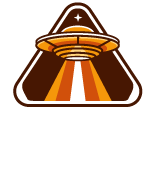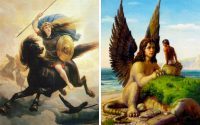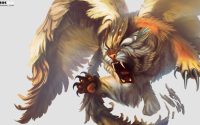Loch Ness Monster – Mythical Creature
The legend of the Loch Ness Monster is one that has been around for centuries. People have claimed that there is a creature lurking in the depths of the loch which has been able to survive for so long in the wilderness. However, scientists and historians alike have been unable to find conclusive proof.
First sighting
The first Loch Ness Monster sighting occurred in 1933. A couple driving along a new road near the loch were reportedly shocked to see a creature that looked like a plesiosaur on the loch’s surface.
As the rumors of a mysterious, aquatic beast spread, the legend of the Loch Ness monster gained popularity. Some people thought that the monster was a prehistoric reptile, while others suggested it was a killer whale. In any event, it was reported in the Scottish press.
In 1934, a London gynecologist, Robert Kenneth Wilson, took a purported photograph of the Loch Ness monster. His photo showed a large, ape-like creature with a long, slender neck. However, the photograph later proved to be a hoax.
Another eyewitness, a veterinary student named Arthur Grant, claimed to have seen the creature in January 1999. After seeing the beast, he believed it to be between 20 and 30 feet long. It was also said to have a long neck and a small head.
Genetic material shed by life in Loch Ness
Environmental DNA, or eDNA, is a form of genetic information that’s shed by creatures living near a body of water. It’s usually left by feces, scales, and other shedding material.
Scientists have long sought to use DNA to answer questions about the environment. Specifically, they’ve used it to identify creatures and monitor invasive species. In New York, scientists have tested DNA in water to see if it can detect Asian Carp, which migrate to the Great Lakes.
The team of scientists at the Institute for Applied Ecology recently collected environmental DNA from Loch Ness. They then compared it to genetic sequences from dozens of other species known to live in the area.
Researchers found a lot of eels and other animals living in the lake. But the evidence did not support the theory that a giant eel or shark is lurking in the waters.
Legends of the Loch Ness Monster
The legends of the Loch Ness Monster are rooted in Scotland’s ancient culture. They have been around for centuries, though the modern era of the monster only began in the 1930s. It is believed that Nessie, or the Loch Ness monster, has been spotted at least 1 to 2 times per year.
In the early 20th century, many people believed that Nessie was real. Several expeditions were carried out to see if the monster existed. But the results were not conclusive.
In the 1930s, a couple claimed to have seen an enormous animal in the waters of the loch. It was reminiscent of a dragon, and compared to a prehistoric monster. Their account was reported in a Scottish newspaper.
In 2003, a BBC-sponsored expedition canvassed the entire lake and found no evidence of a Loch Ness Monster. Despite these results, Loch Ness Monster is still a popular myth.
Legends about the Loch Ness Monster’s appearance
The Loch Ness Monster is a legendary sea creature in Scotland. The monster’s appearance has inspired books, TV shows, films, and tourist attractions. While some believe the legend to be a myth, others believe it to be real.
Legends of the Loch Ness Monster date back as far as 1,500 years. According to legend, the monster was created by the Celtic Winter Queen Dark Beira. It has four limbs and a snake-like head. In its early days, it resembled a dragon, but its shape eventually changed.
In the 1930s, a local couple claimed to have seen an “enormous animal” on the surface of the loch. Reports varied in their description, but most claimed it resembled a whale or a dragon.
Some reports described the Loch Ness monster as having a long neck. Researchers subsequently found plesiosaur fossils, indicating the creature lived in freshwater.
Legends about the Loch Ness Monster’s behaviour
The Loch Ness Monster (also known as Nessie) is a mythical creature that has been spotted several times. It is believed to live in Loch Ness, a body of water in Scotland.
Sightings of the monster occurred in the past, but interest in the legend began to rise in the 1930s. This led to a search for the creature. One such effort was Operation Deepscan. In order to find the Loch Ness Monster, a submersible camera was deployed with a floodlight.
The first reported sighting of the Loch Ness Monster was in May 1933. George Spicer and his wife were driving to Inverness from London when they saw a monster crossing the road. Their story was printed in the Inverness Courier.
Despite the fact that the sighting of the Loch Ness Monster has been verified, it is still a matter of debate as to whether or not the monster actually exists. Many people believe that the story is a myth, but others believe that it is real.



